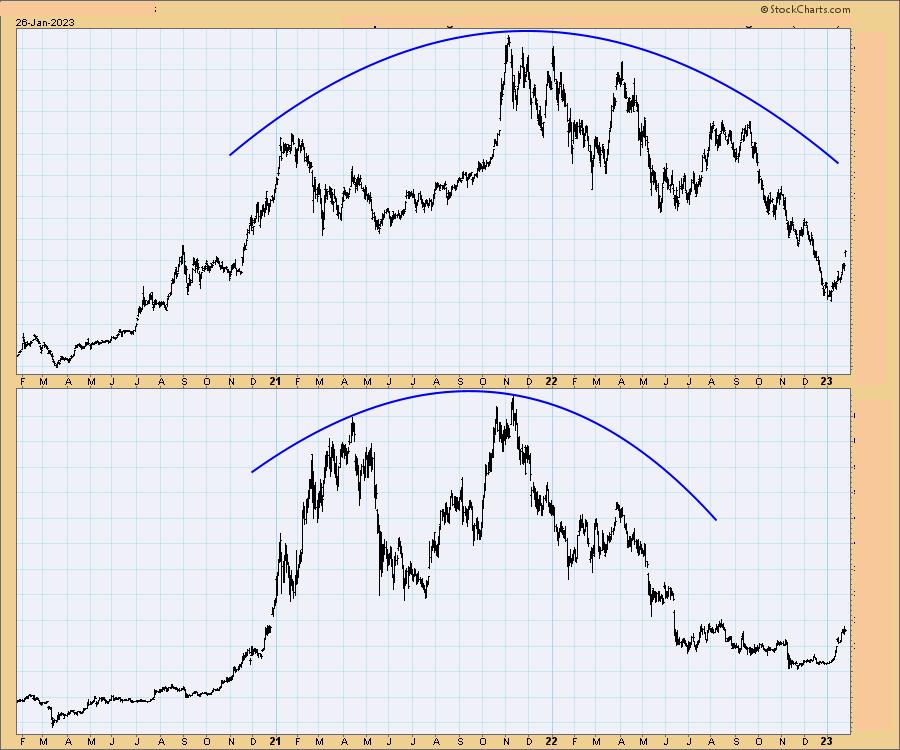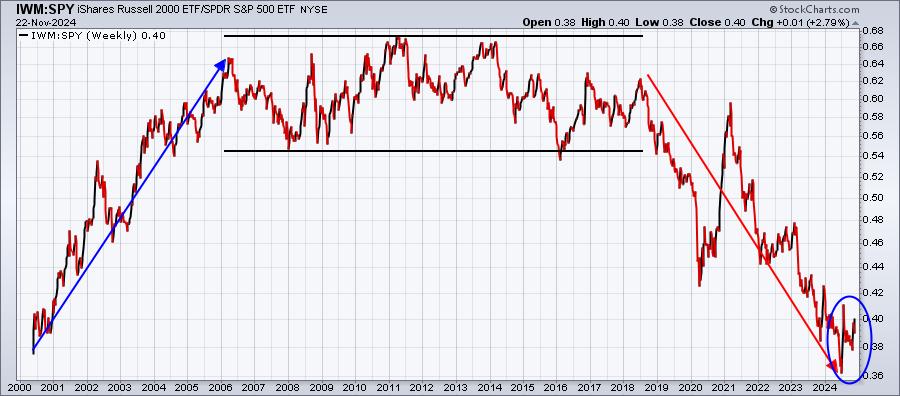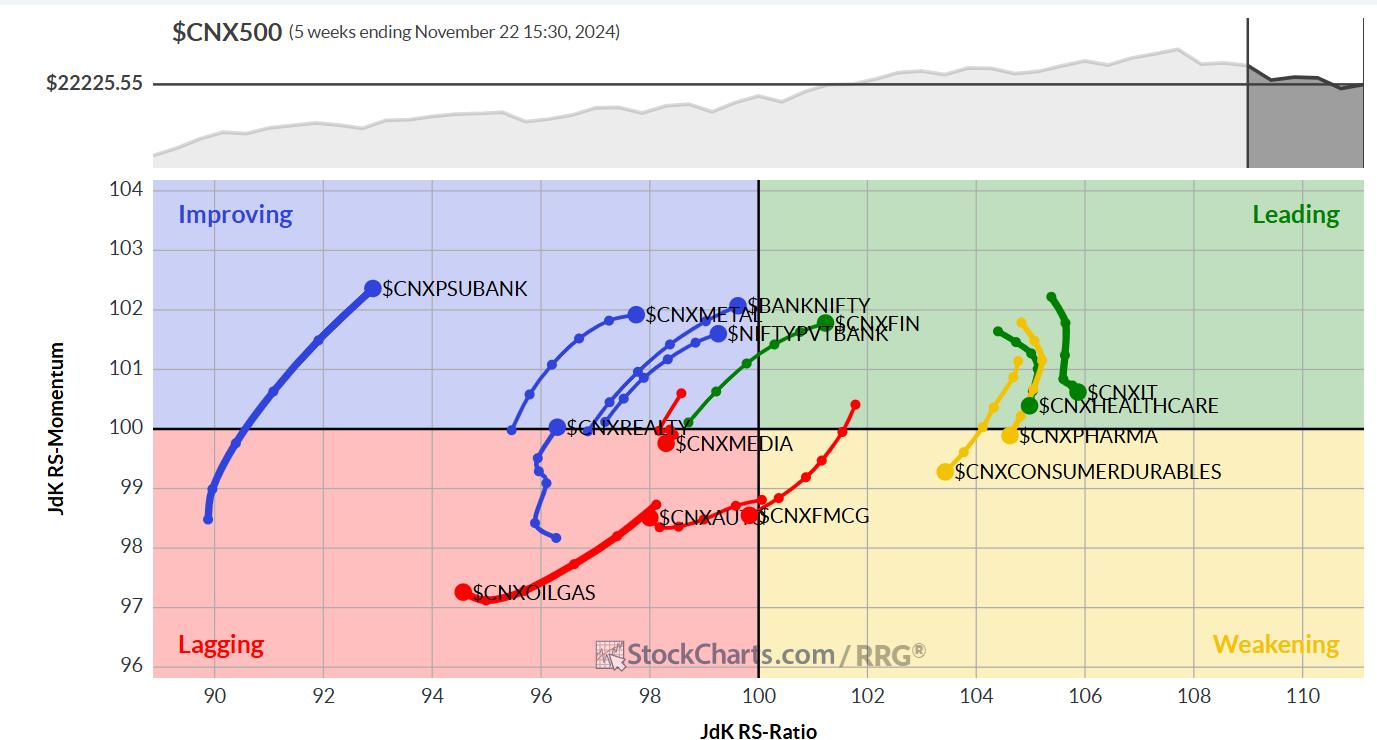Last month in our Trading Room by DecisionPoint I gave our viewers a pop quiz. I presented two similar charts without names or price scales and asked them to identify them solely by the shape of the price indices. The point I was trying to make was that while they were different, they were driven by similar waves of psychology. They started at a 2020 low, moved to a 2021 high, formed large rounded tops, and then crashed in 2022.
The point I wanted to make was that the psychology behind each was virtually identical – panicked buyers who drove prices to irrational levels, and then sold when the imagination faded. Let’s see who they are and how similar their trips have been.

Watch the latest episode of decision point on the StockCharts TV YouTube channel here!
The top chart panel is Tesla (TSLA), an electric car company, and the bottom panel is Bitcoin ($BTCUSD), a cryptocurrency. They are essentially different investment products, but they have evolved with amazing similarity. Honestly, I didn’t know how awesome it was until I started writing this article and started tweaking the annotations. Both started from a March 2020 low, surged about +1750% to a November 2021 high, and then plunged about -75% to 2022 lows. They’re both recovering from those lows now, and amazingly, they’ve both recovered about +60%.

We have to wonder what would drive such amazing progress. In my opinion it comes from magical, tulip, bubble thinking. For Tesla, the underlying belief seemed to be that everyone would own an electric vehicle, and it would be a Tesla.
For Bitcoin, the belief was that the sky is the limit for an “asset” that has no intrinsic value. It was great for a while, but there was never anything but fantasy, and the truth that a bitcoin is not entitled to anything eventually prevailed. It’s only worth what someone is willing to pay for it. Along the way, there was also a belief that a crypto investment was an investment in blockchain technology. While investments have been held within a blockchain system, there has never been direct ownership of this technology.
Conclusion: These are unrelated investment products, but they moved with amazing similarity. I contend that there is no fundamental basis for this other than the human tendency to lose track of reality from time to time and follow emotions at unreasonable lengths.
Technical analysis is a windsock, not a crystal ball. -Carl Swenlin
(c) Copyright 2023 DecisionPoint.com
Helpful DecisionPoint links:
List of DecisionPoint alert charts
DecisionPoint Golden Cross/Silver Cross Index Chart List
List of DecisionPoint sector charts
Price Momentum Oscillator (PMO)
Swenlin Trading Oscillators (STO-B and STO-V)
DecisionPoint is not a registered investment advisor. Investment and trading decisions are your sole responsibility. DecisionPoint newsletters, blogs or website materials should NOT be construed as a recommendation or solicitation to buy or sell any security or to take any particular action.

Karl Swenlin is an experienced technical analyst who has been actively involved in market analysis since 1981. A pioneer in creating online technical resources, he was President and Founder of DecisionPoint.com, one of the Internet’s leading market timing and technical analysis websites. DecisionPoint specializes in stock market indicators and charts. Since DecisionPoint’s merger with StockCharts.com in 2013, Carl has served as a consulting technical analyst and blog contributor.
learn more






